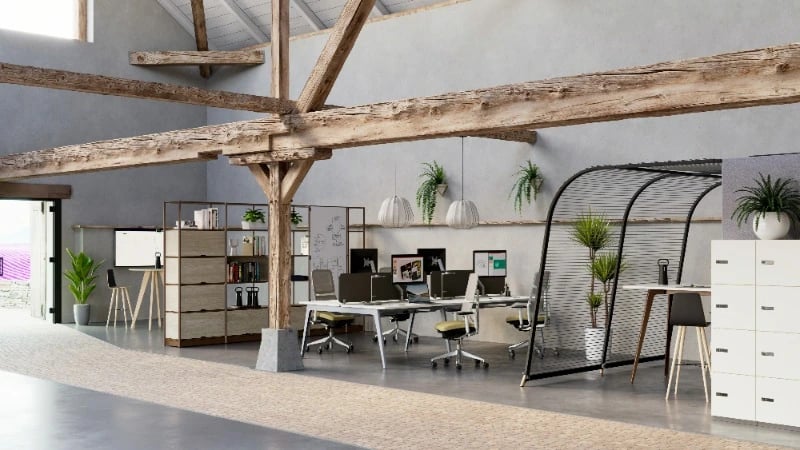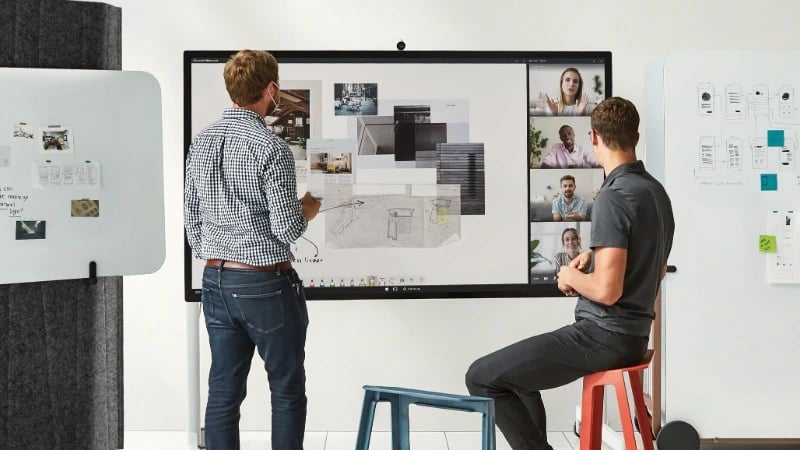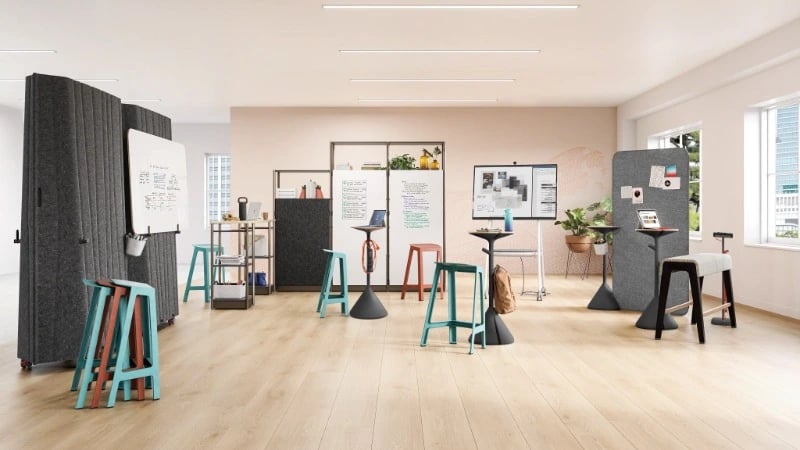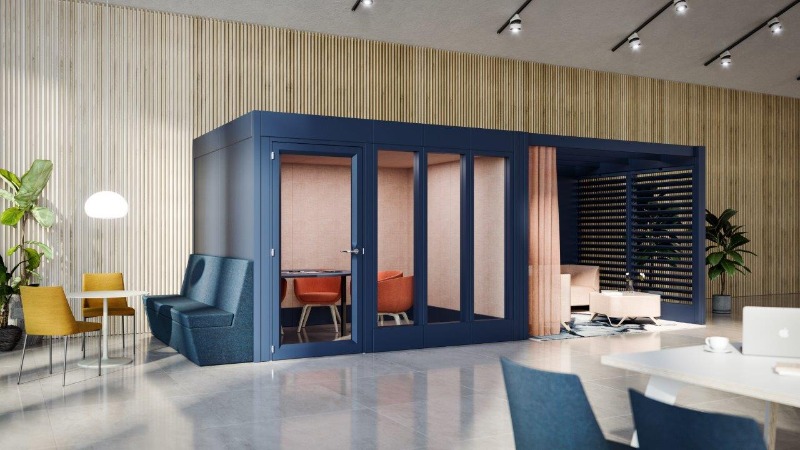The future of the workplace is set to be one of change and transformation, as organisations reconfigure their spaces to meet new ways of working and new expectations.
New challenges driving workplace transformation
The world of work has been shaken and flipped on its head. Covid-19 changed everything, from where and when we work, to the tools and technologies we need to get work done.
Coming out of the pandemic, hybrid working is here to stay. And physical workspaces are being reimagined, with rows of workstations being replaced to make way for areas of collaboration, innovation and community-building.
There’s a heightened focus on employee wellbeing. And growing environmental, social and corporate governance (ESG) targets are driving companies to make more sustainable choices.
This shift in priorities is triggering a great workplace shake up. Companies are transforming their workplaces to create smarter, healthier, and more sustainable environments.

How to make your workplace transformation a success
Having supported hundreds of workplace transformations, we’ve collated some of our top tips.
1. Define your strategy
What are your wider business goals? To become carbon neutral, more inclusive, or attract new talent? Perhaps it’s all of the above.
Aligning your workplace strategy to your business goals will help you to achieve your company’s objectives. You’ll also be in a better position to gain support from senior stakeholders when it comes to getting sign off on budget.
When defining your strategy, you should also identify what workers need and want from the workplace.
Gather stories from the floor to understand:
- how people use your existing space
- what areas are under or over used
- the types of meetings you have
- the products, tools and technology workers rely on to get work done
You can capture all this insight with staff surveys and interviews with leaders across the business.

2. Do a furniture audit
A culture of fast furniture has led to millions of unwanted products ending up in landfill every year. To avoid adding to the vicious cycle of “pollute, dispose, replace”, look to see if there’s any value in your existing furniture. There may be plenty of life left yet.
A furniture audit will measure, track and assess your furniture to see what assets still hold value and can be reused, refurbished, resold or donated. And what assets need to be recycled.
Some examples of how furniture can be reused or repurposed include:
- Turning unused desks into collaboration tables by removing beams and altering leg frames
- Respraying and reupholstering assets to be used in different settings
- Reupholstering or replacing parts to make tired chairs look like new
3. Plan your space
Now you can start thinking about the additional furniture products you will need and how they can work in your space alongside your existing assets. Product brochures, 3D renders and showroom visits will help you visualise your options.
Getting the aesthetics and finishes right and ensuring the palette works within the space and your existing furniture will be important. As will ensuring products meet ergonomic and environmental standards. A good office furniture provider should help you with all this.

4. Experiment
94% of global companies plan to run pilots or prototypes - Steelcase
What’s the best way to find out if something works? By testing it of course. And that’s just the move many companies are taking in the process of designing their office space.
The earlier you think about this the better. If you know you are moving your office in five years time, you could start prototyping your space now to define ways of working and activity settings, measuring what works and what doesn’t.
The more time you have for plans to evolve, the better chance you have of creating a space that really works for your people.
5. Consolidate suppliers
You may think that more suppliers equals more choice. But in reality, consolidating suppliers will give you more leverage on price. A good office furniture provider will source numerous products at different price points to meet your requirements.
You’ll also find that consolidating suppliers will reduce your carbon footprint. You’ll require fewer deliveries to site, and have more control over the type of waste created as part of the process, what it’s made up of, and who deals and disposes of it.

Summary
There is no silver bullet for making your workplace transformation a success. But these tips should help you to align your focus.
At Insightful Environments, we can help guide you through every stage of your workplace transformation. We can support you with strategy development, furniture audits, exploring new products, prototyping solutions, and we'll take care of delivery and installation too.
Importantly, our work doesn’t stop after the project’s been delivered. Creating working environments that meet continually evolving needs and expectations is going to take an extended effort. We act as a trusted partner to guide you every step of the way.
To discuss an upcoming project or find out more about what it’s like to work with IE, get in touch.









